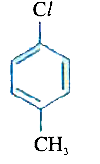Which one is a nucleophilic substitution reaction among the following?
CH3CHO+HCN→CH3CH(OH)CN
CH3+CH=CH2+H2OH+−−→CH3−CH∣OH−CH3
RCHO+R'MgX→R−CH∣OH−R'
CH3−CH2−CH3∣CH−CH2Br+NH3
→CH3−CH2CH3∣CH−CH2NH2
The correct Answer is:D
To determine which of the given reactions is a nucleophilic substitution reaction, we will analyze each option step by step.
Step 1: Analyze the First Reaction
Reaction: CH₃C(=O)H + SCN⁻
- In this reaction, the cyanide ion (CN⁻) acts as a nucleophile.
- The CN⁻ attacks the carbonyl carbon, leading to the formation of a new bond with CN⁻.
- This results in the formation of CH₃C(OH)(CN) and does not involve the replacement of any atom or group.
- Conclusion: This is a nucleophilic addition reaction, not a substitution.
Step 2: Analyze the Second Reaction
Reaction: CH₃C(=CH₂) + H₂O (in acidic conditions)
- Here, the double bond is attacked by H⁺ from the acid, leading to the formation of a carbocation.
- Water (H₂O) then attacks the carbocation, leading to the formation of an alcohol.
- There is no group being replaced in this reaction; instead, we see the addition of water across the double bond.
- Conclusion: This is also a nucleophilic addition reaction, not a substitution.
Step 3: Analyze the Third Reaction
Reaction: RCHO + R'MgX
- In this reaction, the Grignard reagent (R'MgX) breaks down to R'⁻ and MgX⁺.
- The R'⁻ acts as a nucleophile and attacks the carbonyl carbon of the aldehyde (RCHO).
- This results in the formation of an alcohol (RCH(OH)R').
- Again, there is no substitution occurring; it is an addition of the nucleophile to the carbonyl.
- Conclusion: This is a nucleophilic addition reaction, not a substitution.
Step 4: Analyze the Fourth Reaction
Reaction: CH₃CH₂CH₂Br + NH₃
- In this reaction, ammonia (NH₃) acts as a nucleophile due to its lone pair of electrons.
- The lone pair from NH₃ attacks the carbon bonded to Br, leading to the breaking of the C-Br bond.
- The bromine (Br⁻) is expelled, and NH₂ group replaces the Br atom.
- Conclusion: This is a nucleophilic substitution reaction because one nucleophile (Br⁻) is replaced by another (NH₂).
Final Answer
The reaction that is a nucleophilic substitution reaction is the fourth reaction (D part): CH₃CH₂CH₂Br + NH₃.
Reaction: CH₃C(=O)H + SCN⁻
- The CN⁻ attacks the carbonyl carbon, leading to the formation of a new bond with CN⁻.
- This results in the formation of CH₃C(OH)(CN) and does not involve the replacement of any atom or group.
- Conclusion: This is a nucleophilic addition reaction, not a substitution.
Reaction: CH₃C(=CH₂) + H₂O (in acidic conditions)
- Water (H₂O) then attacks the carbocation, leading to the formation of an alcohol.
- There is no group being replaced in this reaction; instead, we see the addition of water across the double bond.
- Conclusion: This is also a nucleophilic addition reaction, not a substitution.
Reaction: RCHO + R'MgX
- The R'⁻ acts as a nucleophile and attacks the carbonyl carbon of the aldehyde (RCHO).
- This results in the formation of an alcohol (RCH(OH)R').
- Again, there is no substitution occurring; it is an addition of the nucleophile to the carbonyl.
- Conclusion: This is a nucleophilic addition reaction, not a substitution.
Reaction: CH₃CH₂CH₂Br + NH₃
- The lone pair from NH₃ attacks the carbon bonded to Br, leading to the breaking of the C-Br bond.
- The bromine (Br⁻) is expelled, and NH₂ group replaces the Br atom.
- Conclusion: This is a nucleophilic substitution reaction because one nucleophile (Br⁻) is replaced by another (NH₂).
The reaction that is a nucleophilic substitution reaction is the fourth reaction (D part): CH₃CH₂CH₂Br + NH₃.
Topper's Solved these Questions
- SOME BASIC PRINCIPALS OF ORGANIC CHEMISTRYBook:A2ZChapter:SOME BASIC PRINCIPALS OF ORGANIC CHEMISTRYExercise:AIIMS Questions
Explore 25 Videos
- SOME BASIC PRINCIPALS OF ORGANIC CHEMISTRYBook:A2ZChapter:SOME BASIC PRINCIPALS OF ORGANIC CHEMISTRYExercise:Assertion- Reasoning Questions
Explore 8 Videos
- SOME BASIC PRINCIPALS OF ORGANIC CHEMISTRYBook:A2ZChapter:SOME BASIC PRINCIPALS OF ORGANIC CHEMISTRYExercise:Section B - Assertion Reasoning
Explore 25 Videos
- SOME BASIC CONCEPTS OF CHEMISTRYBook:A2ZChapter:SOME BASIC CONCEPTS OF CHEMISTRYExercise:Section D - Chapter End Test
Explore 30 Videos
- STATES OF MATTERBook:A2ZChapter:STATES OF MATTERExercise:Section D - Chapter End Test
Explore 30 Videos
Similar Questions
Knowledge Check
Which one is a nucleophile substitution reaction among the following ?
A B
B C
C D
D
Which is a nucleophilic substitution reaction among the following?
ACH3−CH=CH2+H2OH+−−→CH3−C∣OHH−CH3BRCHO+R''MgXH2O/H+−−−−−→R−C∣OHH−R''CCH3−CH2−CH3∣CH−CH2−Br+NH3→CH3−CH2−CH3∣CH−CH2−NH2.DCH3CHO+HCN→CH3CH(OH)CN.
Aromatic Nucleophilic Substitution Reaction
View SolutionNucleophilic substitution reaction in Haloarenes
View SolutionNucleophilic Substitution Reaction|Summary
View SolutionNucleophilic Substitution Reaction|Summary
View SolutionNucleophilic Substitution Reaction|Summary
View SolutionNucleophilic Substitution Reaction|Summary
View Solution

